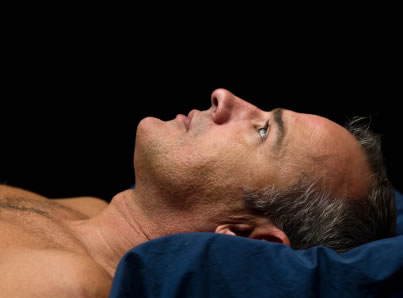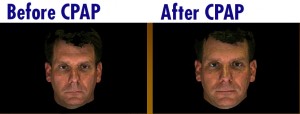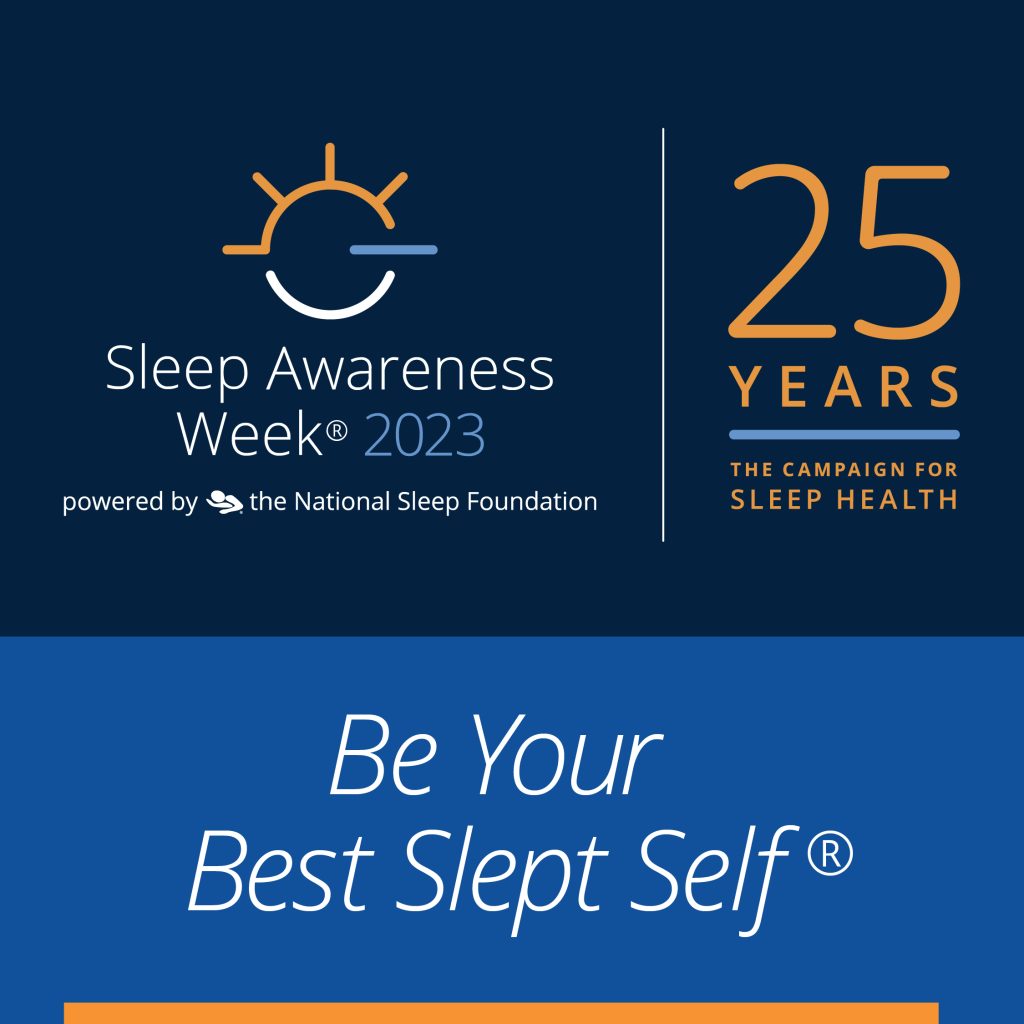
istockphoto
Getting treatment for a common sleep problem may do more than help you sleep better – it may help you look better over the long term, too, according to a new research study from the University of Michigan Health System and Michigan Technological University.
The findings aren’t just about “looking sleepy” after a late night, or being bright-eyed after a good night’s rest.

These images are labeled to show which was taken before the patient had CPAP treatment for sleep apnea, and which was taken after. In the study, independent raters who didn’t know which was which were able to tell the difference two-thirds of the time. A detailed analysis of these and other images also showed less redness and forehead puffiness after treatment – though no improvement in dark circles or puffiness under the eyes.
It’s the first time researchers have shown specific improvement in facial appearance after at-home treatment for sleep apnea, a condition marked by snoring and breathing interruptions. Sleep apnea affects millions of adults – most undiagnosed — and puts them at higher risk for heart-related problems and daytime accidents.
Using a sensitive “face mapping” technique usually used by surgeons, and a panel of independent appearance raters, the researchers detected changes in 20 middle-aged apnea patients just a few months after they began using a system called CPAP to help them breathe better during sleep and overcome chronic sleepiness.
While the research needs to be confirmed by larger studies, the findings may eventually give apnea patients even more reason to stick with CPAP treatment – a challenge for some because they must wear a breathing mask in bed. CPAP is known to stop snoring, improve daytime alertness and reduce blood pressure.
Sleep neurologist Ronald Chervin, M.D., M.S., director of the U-M Sleep Disorders Center, led the study, which was funded by the Covault Memorial Foundation for Sleep Disorders Research and published in the Journal of Clinical Sleep Medicine.
Putting anecdote to the test
Chervin says the study grew out of the anecdotal evidence that sleep center staff often saw in sleep apnea patients when they came for follow-up visits after using CPAP. The team, including research program manager Deborah Ruzicka, R.N., Ph.D., sought a more scientific way to assess appearance before and after sleep treatment.
“The common lore, that people ‘look sleepy’ because they are sleepy, and that they have puffy eyes with dark circles under them, drives people to spend untold dollars on home remedies,” notes Chervin, the Michael S. Aldrich Collegiate Professor of Sleep Medicine and professor of Neurology at the U-M Medical School. “We perceived that our CPAP patients often looked better, or reported that they’d been told they looked better, after treatment. But no one has ever actually studied this.”
They teamed with U-M plastic and reconstructive surgeon Steven Buchman, M.D., to use a precise face-measuring system called photogrammetry to take an array of images of the patients under identical conditions before CPAP and a few months after. Capable of measuring tiny differences in facial contours, the system helps surgeons plan operations and assess their impact.
“One of the breakthroughs in plastic surgery over the last decade has been our aim to get more objective in our outcomes,” says Buchman. “The technology used in this study demonstrates the real relationship between how you look and how you really are doing, from a health perspective.”
The research team also included longtime collaborators at the Michigan Tech Research Institute, led by signal analysis expert and engineer Joseph W. Burns, Ph.D., who developed a way to precisely map the colors of patients’ facial skin before and after CPAP treatment.
The researchers also used a subjective test of appearance: 22 independent raters were asked to look at the photos, without knowing which were the “before” pictures and which the “after” pictures of each patient. The raters were asked to rank attractiveness, alertness and youthfulness – and to pick which picture they thought showed the patient after sleep apnea treatment.
Results show improvement
About two-thirds of the time, the raters stated that the patients in the post-treatment photos looked more alert, more youthful and more attractive. The raters also correctly identified the post-treatment photo two-thirds of the time.
Meanwhile, the objective measures of facial appearance showed that patients’ foreheads were less puffy, and their faces were less red, after CPAP treatment. The redness reduction was especially visible in 16 patients who are Caucasian, and was associated with the independent raters’ tendency to say a patient looked more alert in the post-treatment photo. The researchers also perceived, but did not have a way to measure, a reduction in forehead wrinkles after treatment.
However, the researchers note, they didn’t see a big change in facial characteristics that popular lore associates with sleepiness. “We were surprised that our approach could not document any improvement, after treatment, in tendency to have dark blue circles or puffiness under the eyes,” says Chervin. “Further research is needed, to assess facial changes in more patients, and over a longer period of CPAP treatment.”
He notes that this initial study wouldn’t have been possible without the generosity of donors who have supported U-M sleep research as a way of honoring the memory of Jonathan Covault, a promising attorney who died young, and whose undertreated sleep apnea may have contributed to his premature death. The Covault family was aware of the research study, and of the importance of research that might encourage others to seek and stay with apnea treatment.
Chervin and his colleagues hope to continue to study the effect of sleep apnea treatment on many aspects of a person’s life, including further research on appearance. “We want sleep to be on people’s minds, and to educate them about the importance of getting enough sleep and getting attention for sleep disorders,” he says.
For more information on sleep disorders diagnosis and treatment at UMHS, visit http://www.uofmhealth.org/medical-services/sleepmedicine. For more information on sleep research at U-M, visit http://www.med.umich.edu/umsleepscience.
The research team also included Arshia Vahabzadeh, B.S., CFPH and Margaret C. Burns. Reference: J Clin Sleep Med 2013;9(9):845-852.
ᔥ University of Michigan



